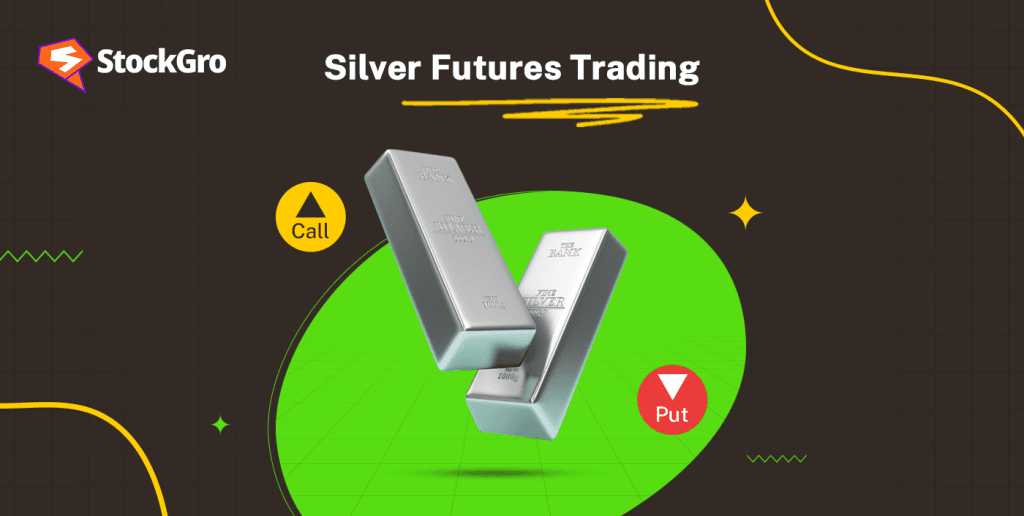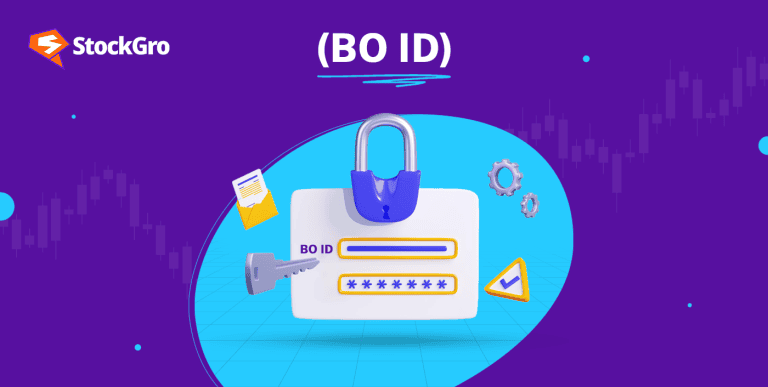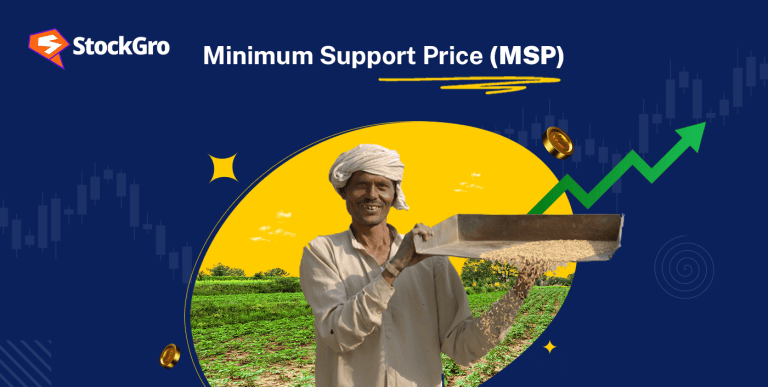
The elaboration of futures trading often discourages investors from trading in the derivative market. With the increasing number of traders suffering losses in the Futures and Options (F&O) market, investor education needs refining. 93% of individual/retail traders lost around ₹2 lakhs in the F & O segment in FY24.
Commodities like Silver, Gold, Cotton, and others are widely traded in authorised exchanges. Moreover, the precious white metal Silver, second to gold, is steadily paving its way as a common derivative market instrument. Therefore, this article addresses the basics of silver futures trading and an overview of its market in India.
Here’s an interesting read: Long-term investing: A smart strategy for lasting wealth
What is Silver Futures trading?
Silver prices have reached unprecedented highs and its demand has surged. Subsequently, the December Silver Future prices have reached ₹1,00,000/kg mark on the multi-commodity exchange for the first time!
But what exactly is silver futures? First, let’s understand what is futures. A future contract is a derivative instrument that functions as a legally binding contract between the buyer and seller to trade a certain amount of an underlying asset.
Silver futures are legal contracts between buyers and sellers to buy/sell a fixed quantity of silver at a preset price on a specific date. They allow traders to speculate on the silver’s price movements without investing.
Silver futures can be traded internationally on the New York Mercantile Exchange (NYMEX) and the Tokyo Commodity Exchange (TOCOM). The most common commodity exchange in India is the Multi Commodity Exchange (MCX).
By buying a silver futures contract, a trader essentially goes ‘long’ on its future. Selling a silver futures contract, on the other hand, means going ‘short’ on its future. The main components involved in silver futures trading in India are its contract size, delivery date, and price. Where, contract size is represented in its trading unit, typically, 30 kgs of silver. Its delivery date is the specific settlement date, almost always considered the contract expiration date. The price is the locked-in price agreed upon entering the contract.
Let’s explain Silver futures trading with an example!
Suppose, a local jeweler wants to purchase 3 kgs of silver in a month for an order delivery around the same time. The current price of Silver is ₹75,000/kg and the jeweler expects silver prices to rise shortly and therefore wants to enter into a futures contract to protect the price today. He enters into a silver futures contract where he locks in the price at ₹75,050/kg for a month. On the date of maturity, the silver price has gone up to 76,000 as the jeweler expected and therefore he gains from the contract.
However, just as in the above example, the possibility of an opposite price movement cannot be ignored!
Risks involved in Silver Futures:
There are two main risks associated with Futures trading:
- Volatility:
Trading in futures contracts, especially in precious metals as underlying commodities, bears high volatility risk. Silver prices are ever-fluctuating and dependent on numerous factors such as international developments, economic changes, supply-demand dynamics, etc. Change in the dynamics of these factors could lead to an unfavourable effect on future prices too.
- Use of Leverage:
Individual traders participate in silver futures using leverage. While it can enhance the possibility of profits, it also significantly amplifies the potential of losses, without proper management. Any price movement in the opposite direction could lead to significant losses and the need for margin calls.
Also Check out: Making Money in Stocks: A Beginner’s Guide to Investing
Importance of Silver Futures trading
Prices of precious metals like Gold and Silver are sky-high! Thus, investing in silver futures promotes a budget-friendly way to enter the precious metal market at a fraction of the cost.
During economic downturns, investors often rush to safer investment options like commodities, specifically precious metals. This raises the demand for these metals, thereby establishing silver futures as a suitable speculative option.
With limited downside risk for buyers, potential hedgers are often drawn to silver futures to safeguard from inflation.
How does futures trading work in India?
To trade in silver futures, investors must go through a SEBI-registered stock broker. Thereafter, the following steps need to be taken:
- Open a trading demat account with the Broker and complete the ‘Know Your Client (KYC)’ process..
- Thoroughly go through the contents of the Risk Disclosure Document (RDD).
- Seek the allotment of a Unique Client Code (UCC)
- Deposit the required margin money with the Broker
- Open a new bank account/use an existing bank account for the funds transfer/receipt.
- Open an account with the repository to facilitate delivery.
There are four main types of silver futures available on the MCX: Big Silver, Mini Silver, Silver Micro, and Silver 1000..
The Big Silver is the most popular contract with a minimum lot size of 30 kgs, followed by Mini Silver which trades in lot sizes of 5 kgs. Silver Micro and Silver 1000, both, trade in lot sizes of 1 kg.
Small investors can participate in silver futures by selecting the size they want to trade in. They are not required to be held until maturity and therefore the traders can square off the position anytime before also.
Also read: SIP vs PPF: How to invest regularly?
Strategies for successful silver futures trading in India:
Three basic strategies used for successful trading in India
- Hedging: Hedging is a strategy that aims to reduce the chances of potential losses. When traders expect silver prices to rise, they take a long position in the silver futures market, locking in a price, thereby reducing the potential of losses in the future. Similarly, traders who expect a fall in the future can enter into a short position, locking in the higher price, thereby reducing the loss from selling in the future. This strategy is a basic hedging strategy that is popularly used for risk management.
- Speculation: involves attempting to profit from price movements in the market. When the price of silver is trending upwards, speculators can profit by buying futures on this, whereas when the market is on a downward trend, speculators can sell futures and thereby earn profit.
- Trading spreads: where the trader takes up two separate positions expiring on different dates, of the same commodity-silver. This divides the risk and increases the possibility of gaining from the price differential of both these contracts.
Bottomline:
Silver futures trading is a constructive yet complex tool for investing in the precious white metal market that requires a superior understanding. By keeping a check on the risk that comes with its attached leverage, one can avoid the complications to some extent. Investors need comprehensive awareness before participating in derivatives trading, to prevent losses.
FAQs
A silver future, essentially, works like a derivative contract, where a buyer or seller enters into a legal agreement to buy/sell a fixed amount of silver at a fixed price, on a fixed date. If an investor expects silver prices to rise, they can buy or long a futures contract. In case the investor expects the future price of silver to fall, they can sell or short a futures contract.
Commodities like Silver are traded on exchanges that are electronic platforms or exchanges where derivative transactions take place. To invest in silver futures in India, an investor can trade on recognised stock exchanges like Multi Commodity Exchange (MCX), National Commodity & Derivatives Exchange (NCDEX), NSE and BSE. A trader must take the services of a registered SEBI registered broker. The players in the commodity exchange are either risk givers or risk takers.
During economic slowdowns and instability, investors consider safe investments like commodities such as silver, gold, etc, as they are expected to move in the opposite direction of equity. This safeguards investors. Trading in futures contracts of silver allows the investor to hedge against price fluctuations. It also allows the trader to participate cost-effectively by paying a fraction of the cost of otherwise expensive commodities such as silver.
Leverage is a special attribute of silver futures trading. It allows the trader to enter into a large volume transaction by paying a small amount as a margin. Leveraging provides an investor with large exposure by hypothetically borrowing a large amount through paying an initial margin. This comes with the possibility of higher profits along with the chance of amplified losses.
Futures trading is exposed to high volatility. As the price of silver fluctuates with the market dynamics, the buyer or seller of the futures contract is exposed to high risk and potential losses. Hedgers and speculators participate in the futures market to take advantage of the volatility in anticipation of favorable dynamics.

